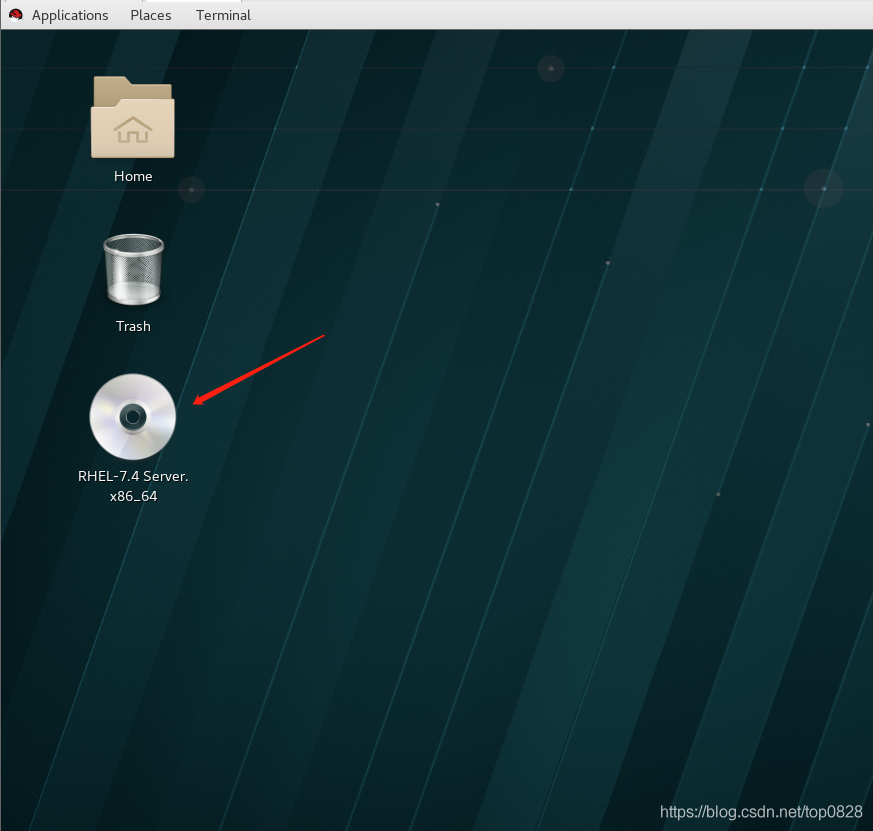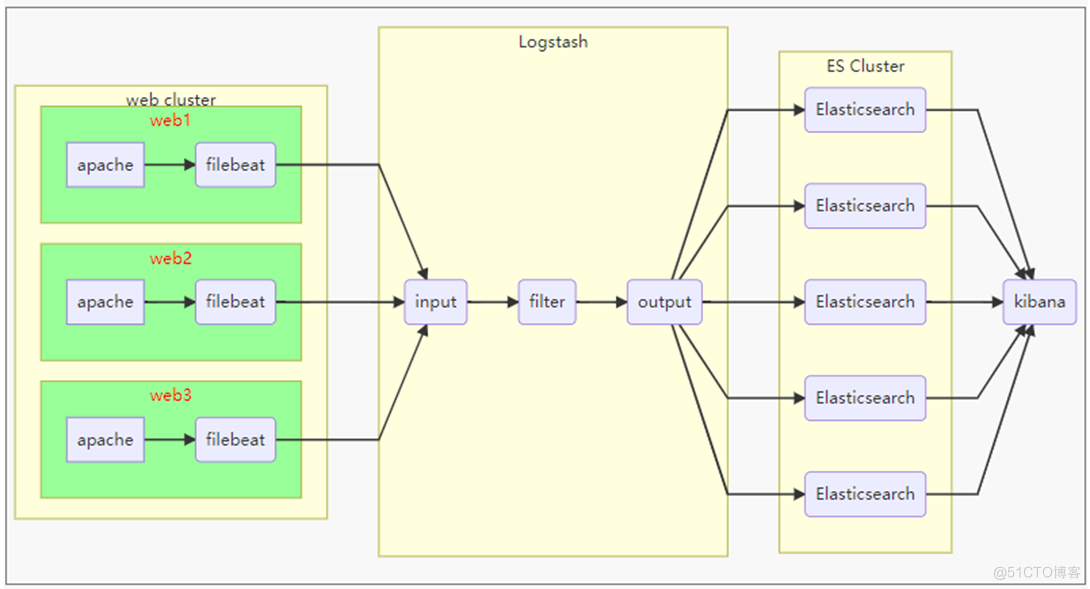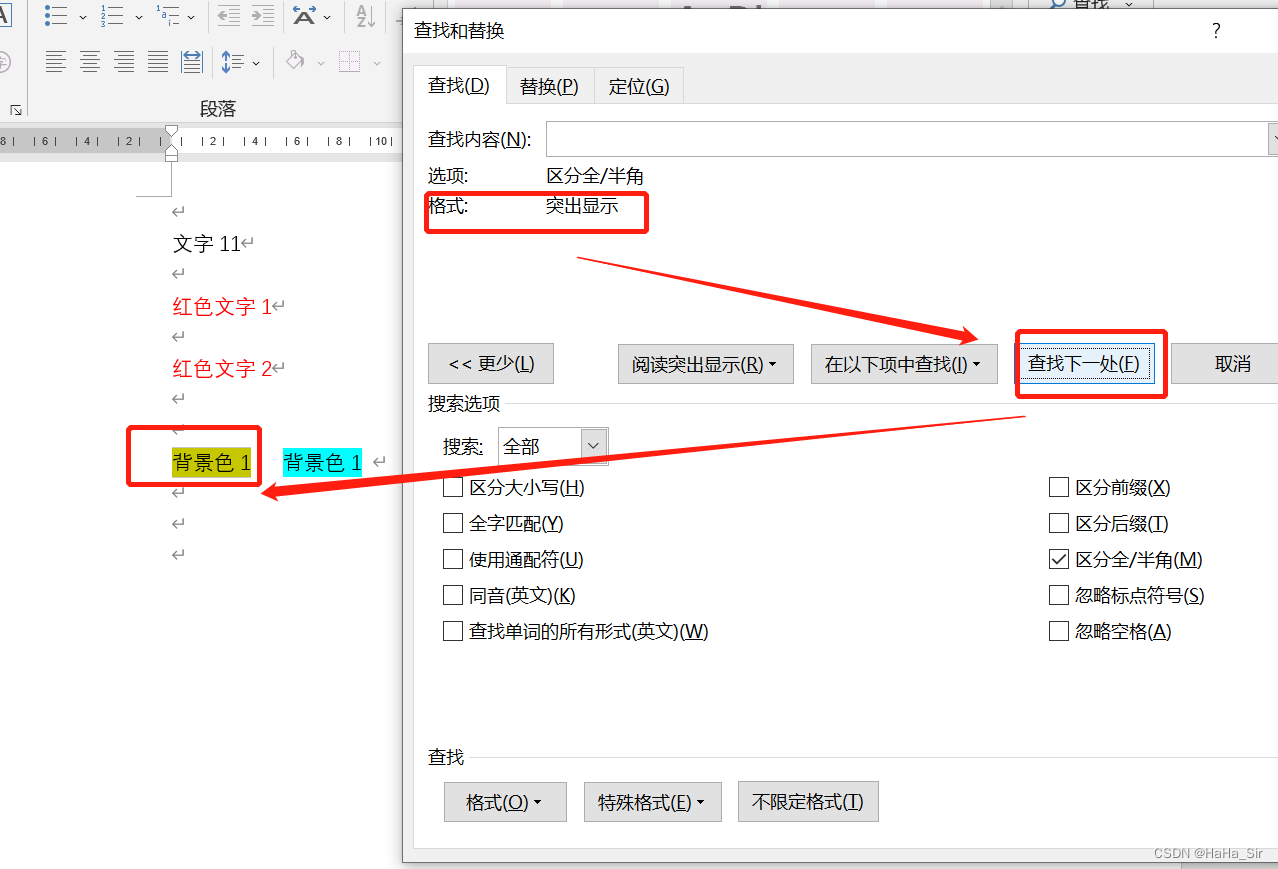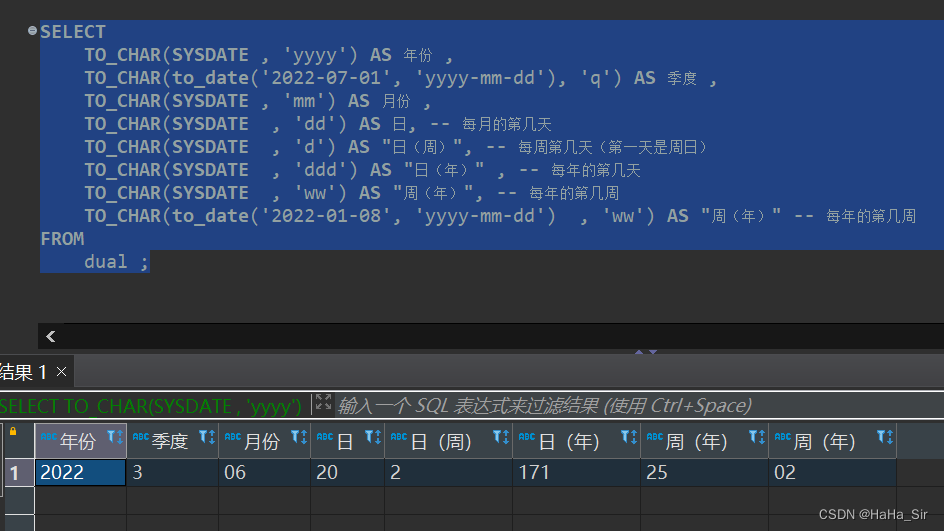当前位置:网站首页>Pandora IOT development board learning (HAL Library) - Experiment 8 timer interrupt experiment (learning notes)
Pandora IOT development board learning (HAL Library) - Experiment 8 timer interrupt experiment (learning notes)
2022-07-05 19:06:00 【Xiaohui_ Super】
This code refers to the punctual atomic routine
List of articles
Experimental function
Routine source code :(main.c)
main() There are only TIM3 Initialization function for , Timer interrupt related codes interrupt service at the timer ( Callback ) Function .
#include "sys.h"
#include "usart.h"
#include "delay.h"
#include "led.h"
#include "timer.h"
/********************************************************************************* ___ _ _____ _____ _ _ _____ _____ _ __ / _ \ | | |_ _|| ___|| \ | ||_ _|| ___|| | / / / /_\ \| | | | | |__ | \| | | | | |__ | |/ / | _ || | | | | __| | . ` | | | | __| | \ | | | || |_____| |_ | |___ | |\ | | | | |___ | |\ \ \_| |_/\_____/\___/ \____/ \_| \_/ \_/ \____/ \_| \_/ * ****************************************************************************** * The punctual atoms Pandora STM32L475 IoT Development board experiment 8 * Timer interrupt experiment HAL Library version * Technical support :www.openedv.com * Taobao shop :http://openedv.taobao.com * Focus on wechat public platform wechat :" The punctual atoms ", Free access STM32 Information . * Guangzhou Xingyi Electronic Technology Co., Ltd * author : The punctual atoms @ALIENTEK * ******************************************************************************/
int main(void)
{
HAL_Init();
SystemClock_Config(); // Initialize the system clock to 80M
delay_init(80); // Initialization delay function 80M The system clock
uart_init(115200); // Initialize serial port , The baud rate is 115200
LED_Init(); // initialization LED
TIM3_Init(5000 - 1, 8000 - 1); // Timer 3 initialization , The timer clock is 80M, The frequency division coefficient is 8000-1,
// So the timer 3 The frequency of is 80M/8000=10K, Automatic reload is 5000-1, So the timer cycle is 500ms
while(1)
{
LED_R_TogglePin; // Prompt the program operation
delay_ms(100);
}
}
Code analysis
HAL_Init()
HAL_Init() The definition is as follows :( See notes for specific functions )
HAL_StatusTypeDef HAL_Init(void)
{
HAL_StatusTypeDef status = HAL_OK;
/* To configure Flash Prefetch , Instruction cache , Data caching */
/* Default configuration is : Pre access is closed Instruction cache and data cache are enabled */
#if (INSTRUCTION_CACHE_ENABLE == 0) // Flash Enable pre access configuration , Can accelerate CPU Execution of code
__HAL_FLASH_INSTRUCTION_CACHE_DISABLE();
#endif /* INSTRUCTION_CACHE_ENABLE */
#if (DATA_CACHE_ENABLE == 0)
__HAL_FLASH_DATA_CACHE_DISABLE();
#endif /* DATA_CACHE_ENABLE */
#if (PREFETCH_ENABLE != 0)
__HAL_FLASH_PREFETCH_BUFFER_ENABLE();
#endif /* PREFETCH_ENABLE */
/* Set Interrupt Group Priority */
HAL_NVIC_SetPriorityGrouping(NVIC_PRIORITYGROUP_2); // To configure NVIC Priority groups
/* Use SysTick as time base source and configure 1ms tick (default clock after Reset is MSI) */
if (HAL_InitTick(TICK_INT_PRIORITY) != HAL_OK) // Initialize tick timer , The clock beat is set to 1ms
{
status = HAL_ERROR;
}
else
{
/* Init the low level hardware */
HAL_MspInit(); // Low speed peripheral initialization , such as GPIO、 Interrupt, etc ( Use STM32CubeMx Low speed peripherals are initialized when generating code
// The code is in this kind of function , In other cases, this function can be ignored
}
/* Return function status */
return status;
}
HAL_InitTick()
Tick timer clock beat initialization function
__weak HAL_StatusTypeDef HAL_InitTick(uint32_t TickPriority)
{
HAL_StatusTypeDef status = HAL_OK;
/*Configure the SysTick to have interrupt in 1ms time basis*/
if (HAL_SYSTICK_Config(SystemCoreClock/1000UL) != 0U) // The system clock /1000, The interruption period is 1ms
{
status = HAL_ERROR;
}
else
{
/*Configure the SysTick IRQ priority */
HAL_NVIC_SetPriority(SysTick_IRQn, TickPriority, 0); // Set the interrupt priority of the tick timer to the highest
}
/* Return function status */
return status;
}
SystemClock_Config()
SystemClock_Config() The function is defined as follows :( See notes for specific functions , For reference only )
void SystemClock_Config(void)
{
HAL_StatusTypeDef ret = HAL_OK;
RCC_OscInitTypeDef RCC_OscInitStruct; // Define oscillator initialization structure variables
RCC_ClkInitTypeDef RCC_ClkInitStruct; // Define clock initialization structure variables
__HAL_RCC_PWR_CLK_ENABLE(); // Enable power control clock
/*Initializes the CPU, AHB and APB busses clocks*/
RCC_OscInitStruct.OscillatorType = RCC_OSCILLATORTYPE_HSE; // take HSE( External high-speed clock ) As a clock source
RCC_OscInitStruct.HSEState = RCC_HSE_ON; // Turn on HSE
RCC_OscInitStruct.PLL.PLLState = RCC_PLL_ON; // Turn on PLL( PLL )
RCC_OscInitStruct.PLL.PLLSource = RCC_PLLSOURCE_HSE; // take HSE As PLL The clock source of
RCC_OscInitStruct.PLL.PLLM = 1; // PLL-VCO Input clock frequency division coefficient ,1 Express 2 frequency division (8 / 2 = 4M, The external crystal oscillator frequency of the development board is 8MHz)
RCC_OscInitStruct.PLL.PLLN = 20; // PLL-VCO Output clock frequency multiplication coefficient ,4 * 20 = 80M, That is, the output clock frequency is 80MHz
RCC_OscInitStruct.PLL.PLLP = RCC_PLLP_DIV7; // SAI Frequency division coefficient of clock
RCC_OscInitStruct.PLL.PLLQ = RCC_PLLQ_DIV2; // SDMMC1, RNG and USB Clock frequency division coefficient
RCC_OscInitStruct.PLL.PLLR = RCC_PLLR_DIV2; // Frequency division coefficient of the main system clock
ret = HAL_RCC_OscConfig(&RCC_OscInitStruct); // Initialize clock configuration
if(ret != HAL_OK) while(1);
/*Initializes the CPU, AHB and APB busses clocks*/
RCC_ClkInitStruct.ClockType = RCC_CLOCKTYPE_HCLK | RCC_CLOCKTYPE_SYSCLK
| RCC_CLOCKTYPE_PCLK1 | RCC_CLOCKTYPE_PCLK2; // Configure all clocks at the same time
RCC_ClkInitStruct.SYSCLKSource = RCC_SYSCLKSOURCE_PLLCLK; // take PLL As the clock source of the system
RCC_ClkInitStruct.AHBCLKDivider = RCC_SYSCLK_DIV1; // AHB Regardless of the frequency
RCC_ClkInitStruct.APB1CLKDivider = RCC_HCLK_DIV1; // APB1 Regardless of the frequency
RCC_ClkInitStruct.APB2CLKDivider = RCC_HCLK_DIV1; // APB2 Regardless of the frequency
ret = HAL_RCC_ClockConfig(&RCC_ClkInitStruct, FLASH_LATENCY_4); // Configure the initial structure variable of the clock ,
// Use Flash Delay 4, Wait state ( Delay ) The quantity of should be according to CPU The clock (HCLK) Frequency and internal voltage range , How to
// Please refer to the chip manual
if(ret != HAL_OK) while(1);
/*Configure the main internal regulator output voltage*/
ret = HAL_PWREx_ControlVoltageScaling(PWR_REGULATOR_VOLTAGE_SCALE1); // Internal register output voltage configuration
// Here is HAL_PWREx_ControlVoltageScaling() Part of the function description :
//PWR_REGULATOR_VOLTAGE_SCALE1 Regulator voltage output range 1 mode, typical output voltage
// at 1.2 V, system frequency up to 80 MHz.
if(ret != HAL_OK) while(1);
}
delay_init()
The tick timer is already HAL_Init() Initialization in , The following function is actually for fac_us Given a value ( At present, the operating system is not involved , Other code will not be studied for the time being ).
static u32 fac_us = 0; //us Delay multiplier
/** * @brief Initialization delay function ,SYSTICK The clock is fixed to AHB The clock * * @param SYSCLK System clock frequency * * @return void */
void delay_init(u8 SYSCLK)
{
#if SYSTEM_SUPPORT_OS // If support is needed OS.
u32 reload;
#endif
HAL_SYSTICK_CLKSourceConfig(SYSTICK_CLKSOURCE_HCLK);//SysTick The frequency is HCLK
fac_us = SYSCLK; // Whether used or not OS,fac_us You need to use
#if SYSTEM_SUPPORT_OS // If support is needed OS.
reload = SYSCLK; // The number of counts per second Unit is K
reload *= 1000000 / delay_ostickspersec; // according to delay_ostickspersec Set the overflow time
//reload by 24 Bit register , Maximum :16777216, stay 80M Next , about 209.7ms about
fac_ms = 1000 / delay_ostickspersec; // representative OS The minimum unit that can delay
SysTick->CTRL |= SysTick_CTRL_TICKINT_Msk; // Turn on SYSTICK interrupt
SysTick->LOAD = reload; // Every time 1/OS_TICKS_PER_SEC Second break once
SysTick->CTRL |= SysTick_CTRL_ENABLE_Msk; // Turn on SYSTICK
#else
#endif
}
LED_Init()
/** * @brief LED IO Initialization function * * @param void * * @return void */
void LED_Init(void)
{
/* LED-B PE9 LED-G PE8 LED-R PE7 */
GPIO_InitTypeDef GPIO_InitStruct;
__HAL_RCC_GPIOE_CLK_ENABLE();
GPIO_InitStruct.Pin = GPIO_PIN_7 | GPIO_PIN_8 | GPIO_PIN_9;
GPIO_InitStruct.Mode = GPIO_MODE_OUTPUT_PP;
GPIO_InitStruct.Pull = GPIO_PULLUP;
GPIO_InitStruct.Speed = GPIO_SPEED_FREQ_HIGH;
HAL_GPIO_Init(GPIOE, &GPIO_InitStruct);
HAL_GPIO_WritePin(GPIOE, GPIO_PIN_7 | GPIO_PIN_8 | GPIO_PIN_9, GPIO_PIN_SET);
}
TIM3_Init()
This experiment uses TIM3 To time , Here is TIM3 Initialization function for ,TIM3 The clock frequency of is 80MHz,main() The frequency division coefficient in the function is 8000 - 1,800000000 / 8000 = 10000Hz, The corresponding timing period is 100us; The overload value is 5000 - 1, Then the trigger cycle of timer timing overflow interrupt is 500ms.
/** * @brief Universal timer 3 Interrupt initialization function * Timer overflow time calculation method :Tout=((arr+1)*(psc+1))/Ft us. * Ft= Timer operating frequency , Company :Mhz * Here's a timer 3!( Timer 3 Hang on APB1 On , The clock is HCLK:80Mhz) * * @param arr Auto reload value . * @param psc Clock presplitting frequency * * @return void */
void TIM3_Init(u16 arr, u16 psc)
{
TIM3_Handler.Instance = TIM3; // Universal timer 3
TIM3_Handler.Init.Prescaler = psc; // Division coefficient
TIM3_Handler.Init.CounterMode = TIM_COUNTERMODE_UP; // Up counter
TIM3_Handler.Init.Period = arr; // Auto load values
TIM3_Handler.Init.ClockDivision = TIM_CLOCKDIVISION_DIV1;// Clock division factor
HAL_TIM_Base_Init(&TIM3_Handler);
HAL_TIM_Base_Start_IT(&TIM3_Handler); // Enable timer 3 And timers 3 Update interrupt :TIM_IT_UPDATE
}
HAL_TIM_Base_MspInit()
above HAL_TIM_Base_Init() The function will call the timer's underlying driver initialization function , This function configures the interrupt attribute of the timer .
/** * @brief Timer bottom drive , Turn on the clock , Set interrupt priority * This function will be HAL_TIM_Base_Init() Function call * * @param htim Timer handle * * @return void */
void HAL_TIM_Base_MspInit(TIM_HandleTypeDef *htim)
{
if(htim->Instance == TIM3)
{
__HAL_RCC_TIM3_CLK_ENABLE(); // Can make TIM3 The clock
HAL_NVIC_SetPriority(TIM3_IRQn, 1, 3); // Set interrupt priority , preemption 1, Sub priority 3
HAL_NVIC_EnableIRQ(TIM3_IRQn); // Turn on ITM3 interrupt
}
}
LED Operation function
LED The control function of is a macro function , We used HAL_GPIO_WritePin() and HAL_GPIO_TogglePin() Two library functions .
//RGB Interface definition
#define LED_R(n) (n?HAL_GPIO_WritePin(GPIOE,GPIO_PIN_7,GPIO_PIN_SET):HAL_GPIO_WritePin(GPIOE,GPIO_PIN_7,GPIO_PIN_RESET))
#define LED_R_TogglePin HAL_GPIO_TogglePin(GPIOE,GPIO_PIN_7) //LED_R Level flip
#define LED_G(n) (n?HAL_GPIO_WritePin(GPIOE,GPIO_PIN_8,GPIO_PIN_SET):HAL_GPIO_WritePin(GPIOE,GPIO_PIN_8,GPIO_PIN_RESET))
#define LED_G_TogglePin HAL_GPIO_TogglePin(GPIOE,GPIO_PIN_8) //LED_G Level flip
#define LED_B(n) (n?HAL_GPIO_WritePin(GPIOE,GPIO_PIN_9,GPIO_PIN_SET):HAL_GPIO_WritePin(GPIOE,GPIO_PIN_9,GPIO_PIN_RESET))
#define LED_B_TogglePin HAL_GPIO_TogglePin(GPIOE,GPIO_PIN_9) //LED_B Level flip
delay_ms()
delay_ms() What runs in the is delay_us(), delay_us() Delay by ticking timer . above delay_init() Have already put fac_us Set up in order to 80, Tick timer counts 80 Time required 10-6 second ( The system clock is 80MHz), namely 1us.
/** * @brief Delay milliseconds (ms) function * * @param nms How many milliseconds does it take * * @return void */
void delay_ms(u16 nms)
{
u32 i;
for(i = 0; i < nms; i++) delay_us(1000);
}
/** * @brief Delay microseconds (us) function * * @remark nus:0~190887435( The maximum value is 2^32/[email protected]_us=22.5) * * @param nus How many microseconds do you need to delay * * @return void */
void delay_us(u32 nus)
{
u32 ticks;
u32 told, tnow, tcnt = 0;
u32 reload = SysTick->LOAD; //LOAD Value
ticks = nus * fac_us; // The number of beats needed
told = SysTick->VAL; // Counter value at the time of first entry
while(1)
{
tnow = SysTick->VAL;
if(tnow != told)
{
if(tnow < told)tcnt += told - tnow; // Notice here SYSTICK It's a decreasing counter .
else tcnt += reload - tnow + told;
told = tnow;
if(tcnt >= ticks)break; // For more than / Equal to the time to delay , The exit .
}
}
}
Interrupt service function
Call... In the underlying interrupt service function HAL Interrupt service function of Library .
/** * @brief Timer 3 Interrupt service function * * @param void * * @return void */
void TIM3_IRQHandler(void)
{
HAL_TIM_IRQHandler(&TIM3_Handler);
}
HAL_TIM_IRQHandler() Some interrupt callback functions will be run in , Among them is HAL_TIM_PeriodElapsedCallback() Timer count overflow interrupt callback function ,
/** * @brief Callback function , Timer interrupt service function call * * @param htim Timer handle * * @return void */
void HAL_TIM_PeriodElapsedCallback(TIM_HandleTypeDef *htim)
{
if(htim == (&TIM3_Handler))
{
LED_B_TogglePin; //LED_B Flip
}
}
边栏推荐
- 在线协作产品哪家强?微软 Loop 、Notion、FlowUs
- Golang through pointer for Range implements the change of the value of the element in the slice
- Mathematical modeling of oil pipeline layout MATLAB, mathematical model of oil pipeline layout
- 2022年5月腾讯云开发者社区视频月度榜单公布
- 2022最新Android面试笔试,一个安卓程序员的面试心得
- 进程间通信(IPC):共享内存
- 视频融合云平台EasyCVR增加多级分组,可灵活管理接入设备
- cf:B. Almost Ternary Matrix【对称 + 找规律 + 构造 + 我是构造垃圾】
- Ten years at sea: old and new relay, dark horse rising
- 从外卖点单浅谈伪需求
猜你喜欢

Redhat7.4 configure Yum software warehouse (rhel7.4)

UDF implementation of Dameng database

ELK分布式日志分析系统部署(华为云)

国内低代码开发平台靠谱的都有哪些?

Word查找红色文字 Word查找颜色字体 Word查找突出格式文本

ICML2022 | 长尾识别中分布外检测的部分和非对称对比学习

Oracle date format conversion to_ date,to_ char,to_ Timestamp mutual conversion
![2022 the most complete Tencent background automation testing and continuous deployment practice in the whole network [10000 words]](/img/4b/90f07cd681b1e0595fc06c9429b338.jpg)
2022 the most complete Tencent background automation testing and continuous deployment practice in the whole network [10000 words]

小程序 修改样式 ( placeholder、checkbox的样式)

公司破产后,黑石们来了
随机推荐
【历史上的今天】7 月 5 日:Google 之母出生;同一天诞生的两位图灵奖先驱
Tianyi cloud understands enterprise level data security in this way
Powerful tool for collection processing
Go语言学习教程(十六)
决策树与随机森林
AI open2022 | overview of recommendation systems based on heterogeneous information networks: concepts, methods, applications and resources
UDF implementation of Dameng database
cf:B. Almost Ternary Matrix【對稱 + 找規律 + 構造 + 我是構造垃圾】
企业级数据安全,天翼云是这样理解的
ICML2022 | 长尾识别中分布外检测的部分和非对称对比学习
Oracle Chinese sorting Oracle Chinese field sorting
Case sharing | integrated construction of data operation and maintenance in the financial industry
鱼和熊掌可以兼得!天翼云弹性裸金属一招鲜!
进程间通信(IPC):共享内存
自动化测试的好处
Benefits of automated testing
C# 语言的基本语法结构
块编辑器如何选择?印象笔记 Verse、Notion、FlowUs
golang通过指针for...range实现切片中元素的值的更改
[today in history] July 5: the mother of Google was born; Two Turing Award pioneers born on the same day